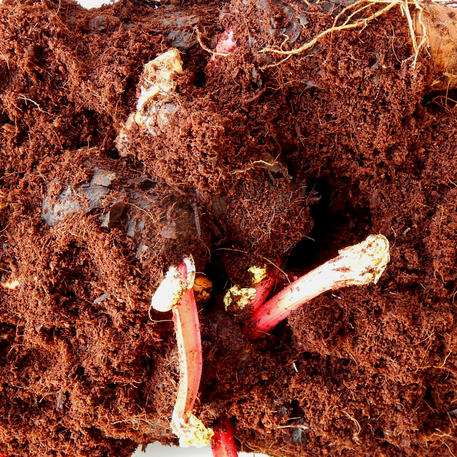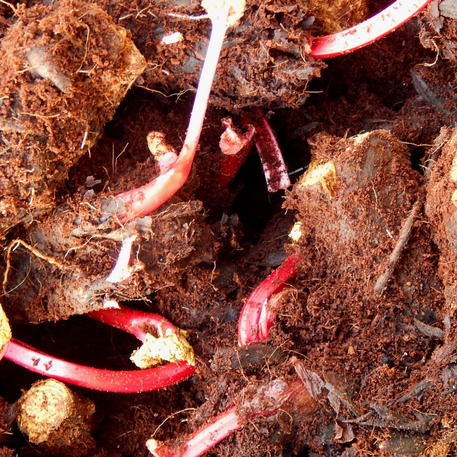-
Filter By Stock
- In Stock (2)
RHUBARB
BOTANICAL NAME: Rheum rhabarbarum
COMMON NAMES: Rhubarb
FAMILY: Polygonaceae, the knotweed family
ORIGIN: The precise origin of culinary rhubarb is unknown however it has been know to have been grown in Europe before the 18th century and used for medicinal purposes.
PLANT DESCRIPTION
Rhubarb is a cool season herbaceous perennial reaching up to 1m in height with thick red stems.
USES
Only the rhubarb stalks should be eaten and they must be cooked - the leaves are poisonous. Rhubarb is rich in iron, and vitamins A and C. It is used as a 'fruit', and can be baked in pies and crumbles, and combines well with apples and ginger. Rhubarb can be dehydrated and infused with fruit juice.
Rhubarb can also be used to make alcoholic drinks, such as fruit wines or Finnish rhubarb sima (mead).
In traditional Chinese medicine, rhubarb roots were valued for its laxative effect although its effectiveness has never been proven.
Stems damaged by severe cold should not be eaten, as they may be high in oxalic acid, which migrates from the leaves and can cause illness. Rhubarb leaves are poisonous and should never be eaten or fed to livestock or poultry however they may be used as a natural remedy in the garden to great advantage.
RHUBARB INSECTICIDAL SPRAY
Chop up 1 kg of rhubarb leaves and boil in 3 litres of water for 30 minutes. Strain. When cool, add to a spray bottle along with 1 tablespoon dishwash liquid and 1 litre of water. Use as a general insecticidal spray against aphids, whitefly and caterpillars.
PLANTING GUIDE
Rhubarb can be grown from crowns or seed. Plant in an open, sunny position. Leave undisturbed for 4-5 years and then divide the plants. Rhubarb requires a deep, well-drained soil, enriched with well-rotted animal manure. Water well in dry spells and mulch the plants annually each spring with compost. Feed with a liquid manure to encourage stem formation. Cut out any flower stems that develop and pick stems very lightly in the first year. Plant the crowns just under the surface around 90cm apart. If planting seed, it will require a germination temperature of 20 - 23°C.
Rhubarb plants require a cold winter and can be hard to grow in areas with very hot summers or high humidity. Plants require good rainfall and an annual cold period of up to 7–9 weeks at 3 °C to produce well.
Rhubarb is ready to consume as soon as harvested, with freshly cut stalks being firm and glossy. Harvest by pulling the thickest stalks off gently with a sidewards motion. Do not take more than half the stalks of any one plant.
COMPANION PLANTS
LIKES: Broccoli, Cabbage, Kohl Rabi, Kale, Cauliflower, Bean (protects from white fly), Garlic, Onions, Strawberry

RHUBARB - EVER RED (crown)
***NOT TO WA*** (Rheum rhabarbarum) Heirloom. Perennial. Long, brilliant red stalks with excellent flavour - one of the sweetest varieties availab
$9.95

RHUBARB - VICTORIA (crown)
COMING SOON ***NOT TO WA*** (Rheum rhabarbarum) Heirloom. Perennial. Broad, upright, reddish-green coloured stems with mild tart flavour. Hardy v
$9.95
